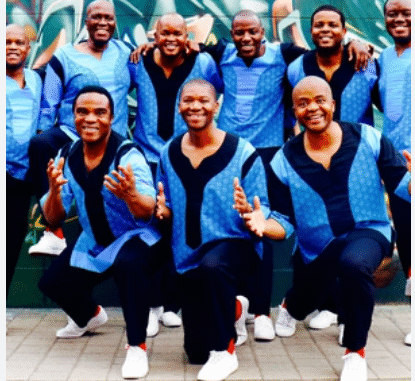
Ladysmith Black Mambazo is a South African male choral group. They are known for isicathamiya, a traditional Zulu a cappella style. Their harmonies are soft, precise, and deeply moving. They became global ambassadors of African music and culture.
Early History
Ladysmith Black Mambazo was formed in 1960 in Ladysmith, KwaZulu-Natal, South Africa. The founder, Joseph Shabalala, gathered local singers from the community. They practiced daily and performed at local events. Their goal was to preserve and promote Zulu music traditions.
Musical Style
Their style, isicathamiya, means “to walk softly” in Zulu. It is slow, gentle, and rhythmic.
The group focuses on:
-
Tight harmonies
-
Soft vocal blending
-
Call-and-response patterns
-
Storytelling through song
Their music is mostly vocal. They rarely use instruments. Songs are often about faith, community, and life struggles.
International Breakthrough
In the 1980s, Paul Simon invited them to collaborate on his album Graceland. Songs like “Homeless” introduced Ladysmith Black Mambazo to global audiences. They toured internationally, performing in Europe, the US, and Asia. Their soft harmonies contrasted with pop and rock, making them stand out.
Major Albums
-
Amabutho (1973) – Early recordings of traditional Zulu songs.
-
Shaka Zulu (1987) – Grammy-winning album, international breakthrough.
-
Journey of Dreams (1988) – African music with universal appeal.
-
Two Worlds, One Heart (1990) – Collaboration with international artists.
-
Raise Your Spirit Higher (2000) – Spiritual and uplifting songs.
-
Songs of Peace & Love (2008) – Focus on faith, hope, and unity.
Shaka Zulu (1987)
This album won a Grammy Award. It introduced the group to audiences outside South Africa. The songs highlighted traditional Zulu stories and harmonies.
Journey of Dreams (1988)
Journey of Dreams kept African roots strong. It combined storytelling, faith, and musical precision. It strengthened their reputation as ambassadors of African music.
What Makes Them Different
-
Focus on isicathamiya, a unique Zulu singing style.
-
Use voice only, rarely instruments.
-
Songs are soft but emotionally powerful.
-
Lyrics reflect life, faith, and African culture.
-
They promote South African music worldwide.
Their sound is peaceful, spiritual, and timeless.
Audience
-
Fans of African music and world music.
-
People who enjoy vocal harmony and a cappella.
-
Listeners looking for calm, reflective music.
-
Students of African culture and music.
Their audience spans generations and continents.
Collaborations
-
Paul Simon – Graceland album.
-
Miriam Makeba – Performances and African unity events.
-
International orchestras and choirs.
Even in collaborations, their Zulu harmonies remain central.
Activism and Cultural Role
They promoted South African culture during apartheid. Their music carried messages of hope, unity, and resilience. They represented South Africa in global events, festivals, and concerts. Joseph Shabalala and the group preserved African traditions for future generations.
Later Years and Legacy
The group continues performing worldwide. Joseph Shabalala passed away in 2020, but the group carries on. They have won multiple Grammy Awards. They remain one of the most respected African music acts.
Legacy highlights:
-
Global ambassadors of Zulu music and African harmonies.
-
Pioneers of isicathamiya style.
-
Preservers of South African culture.
-
Influencers of international world music and vocal groups.
Words
Ladysmith Black Mambazo is more than a choir. They are voices of South Africa. Their music is soft but carries deep meaning. It celebrates culture, faith, and community.
For anyone exploring African music, a cappella harmonies, or Zulu traditions, Ladysmith Black Mambazo is essential listening.
Leave a Reply